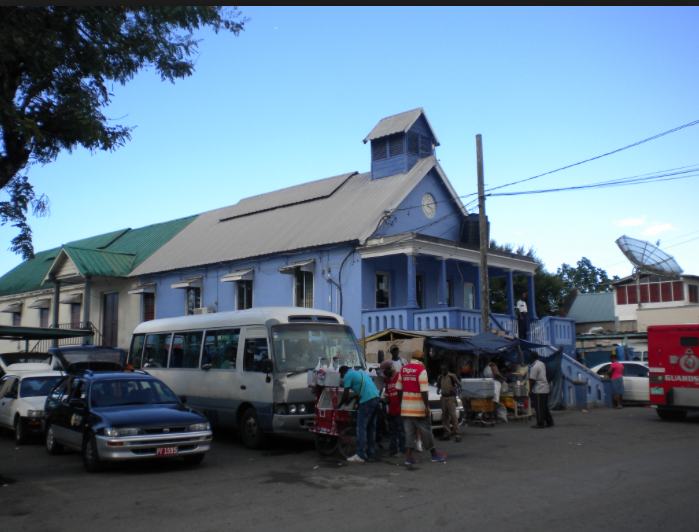Port Maria
Image retrieved from: https://www.zoopla.co.uk/overseas/details/17917928
Port Maria
Port Maria, the capital of the parish, is home to several buildings which survived from Port Maria’s golden days of being a busy port, such as the St Mary Parish Church and the old courthouse.
Oracabessa, Circa 1860. Image retrieved from: https://en.wikipedia.org/wiki/Oracabessa#/media/File:Oracabessa_History2.jpg
Oracabessa
Oracabessa is located west of Port Maria on the main road leading to the neighbouring parish of St. Ann. The name Oracabessa is thought to have been derived from the Spanish ‘oro de cabeza’ meaning Golden Head. Oracabessa is a farming town.
image retrieved froM google images
Annotto Bay
Annette Bay is a sea coast town on the western side of the mouth of the Wag Water River, one of St. Mary’s many rivers. In its heyday, Annotto Bay boasted a rich sugar estate, Grays Inn, but this sugar factory no longer functions since banana has replaced sugar as the main crop. The rusting smoke stacks that once billowed forth life on this estate now stand idle.
image retrievd from google images
Highgate
Highgate is a busy, bustling, agricultural and commercial centre.
IMage retrieved from google images
Richmond
Formerly known as Meeks Springs, Richmond is a residential and farming area. Here is located Jamaica’s first ‘prison without bars’- Richmond Prison.
History
St. Mary is well known for being one of the first sections of the island to be occupied by the Spaniards. In 1655, after the English captured Jamaica from the Spanish, the area around the town of Puerto Santa Maria became known as St. Mary. Port Maria, the current capital of the parish was the second town built by the Spaniards on the island. Today, this parish includes the former parish of Metcalfe and part of the former parish of St. George. Numerous national monuments still stand in the parish such as the town of Rio Nuevo which holds historical significance for being the site of the last battle between the invading English and the defending Spaniards who eventually had to flee to Cuba.
In 1760, the most serious rebellion in Jamaica’s history broke out around Port Maria, eventually spreading to almost the entire island. The leader of this rebellion was a Coromantee slave called Tacky, who belonged to the Frontier Estate. Fort Haldane, now Grays Charity, was seized and ammunition taken. The rebels then moved inland. Many whites were killed.
After Emancipation, free villages were formed in St. Mary but the parish still basically remained one with big estates. At the beginning of the 19th century there were 63 sugar factories in the parish but by the end of the century only three existed.
With the decline of sugar, banana cultivation took its place. In the late 1930s, St. Mary played a prominent role in the creation of Jamaica Producer’s Association which was set up to prevent the continuation of the monopoly on bananas held by the United Fruit Company and other purchasing organisations. Under the umbrella of the Association, the Jamaica banana growers banded together to ship and market their own produce.
All Information Retrieved from: https://jis.gov.jm/information/parish-profiles/parish-profile-st-mary/






